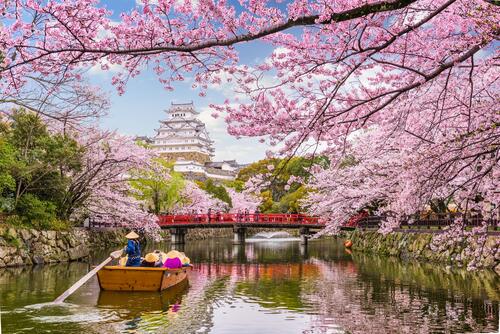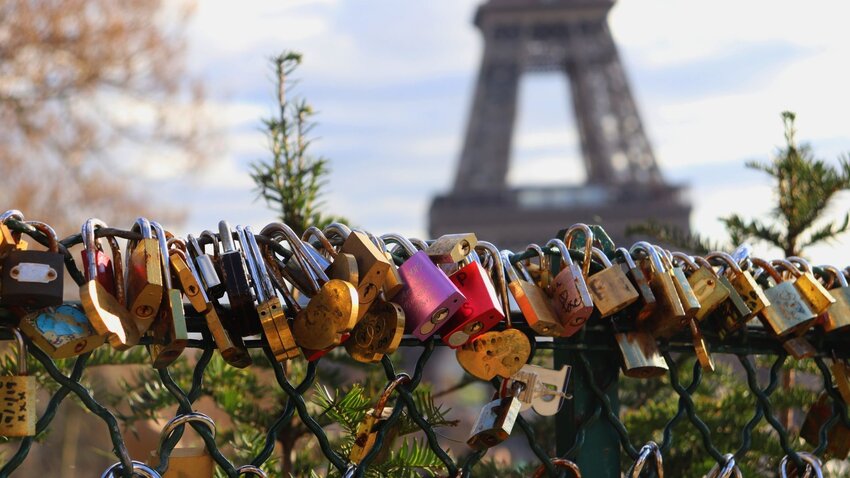Matcha has soared in popularity in the west in recent years, most notably for its unique flavor profile and slew of health benefits. This region of the world has seen an uptick in cafes dedicated solely to matcha based drinks and sumptuous matcha baked goods. But for centuries, matcha has held a place of significance in Japanese culture by way of tea ceremonies, and though these affairs are meticulously choreographed, just enjoying a cup of matcha tea doesn’t have to be as precise. With the right equipment, whisking one together can be a piece of cake.
An Ancient Tradition
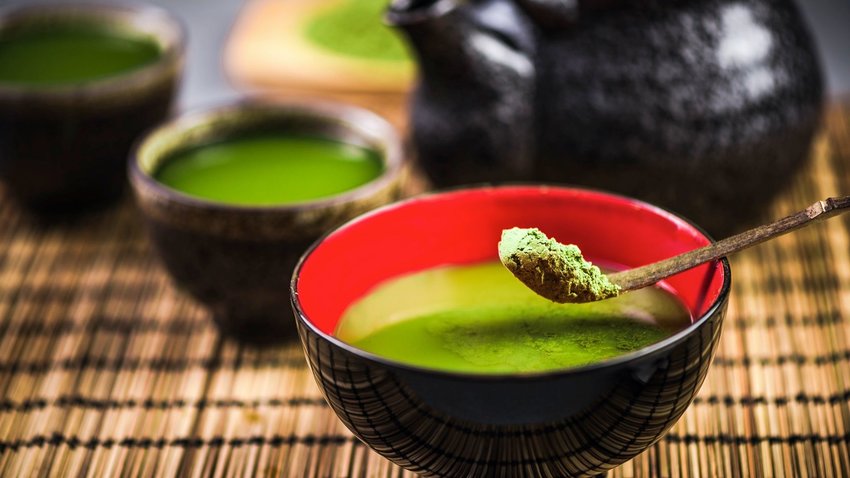
A tea ceremony, or the Way of Tea, is the ceremonial preparation and drinking of matcha, a social bonding activity that has been a part of Japanese culture for centuries. The multi hour affair is typically conducted in a traditional tearoom, plainly decorated with tatami mats, hanging scrolls, and seasonal flowers. The minimalism evokes calm, and creates an environment free of distractions from the outside world. Matcha tea was highly regarded by Buddhist monks in ancient times, and was sipped to help maintain concentration during lengthy meditation sessions. Sometime in the 13th century, this practice was introduced to Samurai warriors, who drank the tea to mentally gear up for battle. Today, traditional tea ceremonies are practiced as a hobby in Japan, and tourists can experience the precise and elegantly choreographed hand movements at zen gardens and culture centers across the country.
It’s Got Health Benefits
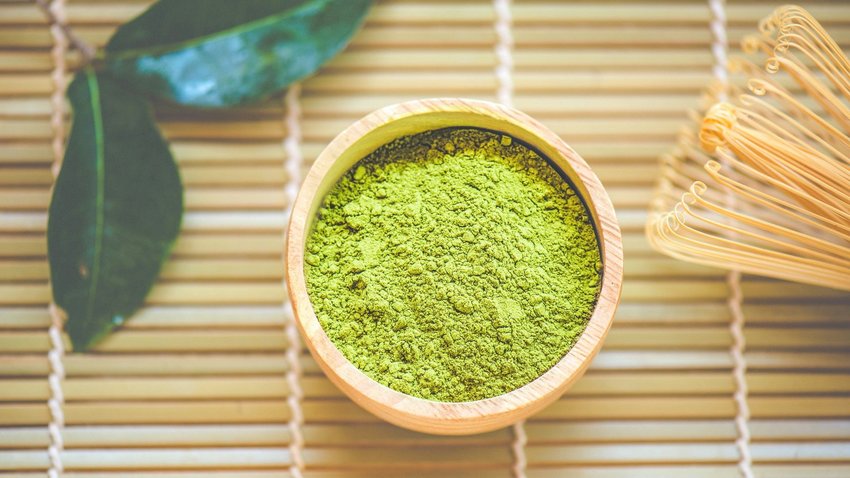
Matcha’s skyrocketing popularity can be attributed to its dynamic nutrient profile and health properties. High in a class of antioxidants called catechins, the consistent intake of matcha tea has been proven in a series of population based studies to have cancer fighting effects, boost heart and brain health, encourage weight loss, and reduce blood pressure. Matcha has far more antioxidants than in regularly brewed green tea, and 20 times more than competing superfoods pomegranates and blueberries.
Choose Your Grade
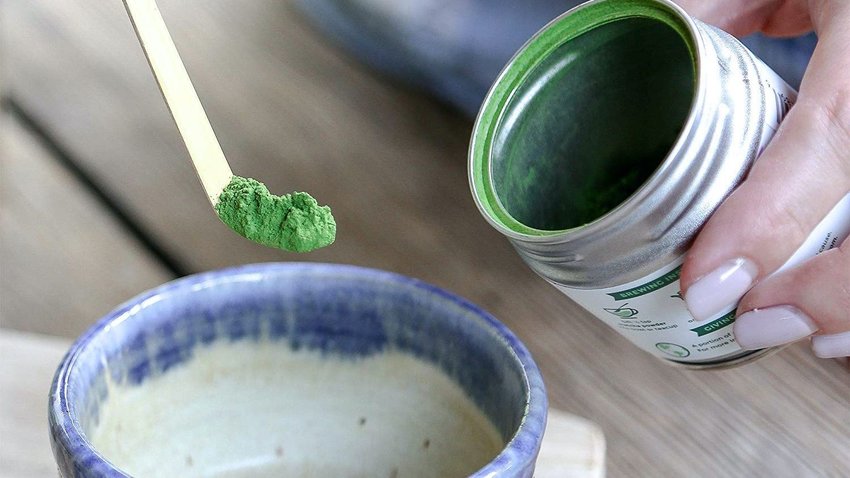
Matcha powder is made by harvesting young tea leaves, removing the stems, then grinding by stone until it becomes a vibrant green substance. Unlike regular brewed green tea where leaves are submerged in boiling water then removed before drinking, matcha is skillfully whisked into warm water and immediately consumed. Drinking matcha in its purest form is an experience, so be sure to select the right grade. The finest matcha leaves come from Japan where they’ve been cultivated for centuries, and are generally divided into two grades: ceremonial and culinary.
Ceremonial
For drinking, spring for the ceremonial grade matcha. Unlike culinary grade matcha, the ceremonial grade powder imparts a naturally sweet flavor with just a hint of bitterness. A high quality package is indicated by the puff of bright green powder that bursts out of the foil packaging as soon as you pull it open, and graces you with a mild grassy smell. This premium quality matcha is so fine and even it’s velvety to the touch. Soar Organics is my go-to. They source their matcha from the tea fields of Uji, just south of Kyoto, and their ceremonial grade powder makes smooth and creamy teas.
Culinary
Though culinary grade matcha carries an attractive lower price point, it doesn’t necessarily mean it’s of a lower quality. It’s a matcha blend that’s meant to be combined with other ingredients like milk and flour, and is often used in lattes, breads, pastries, and ice cream. If you drink it as a tea with just hot water, the culinary grade matcha imparts more of a bitter flavor. Culinary grade matcha offers more versatility, and though it shares that same smooth texture and potency as the ceremonial grade matcha, is not as vibrant in color.
Get the Right Tools
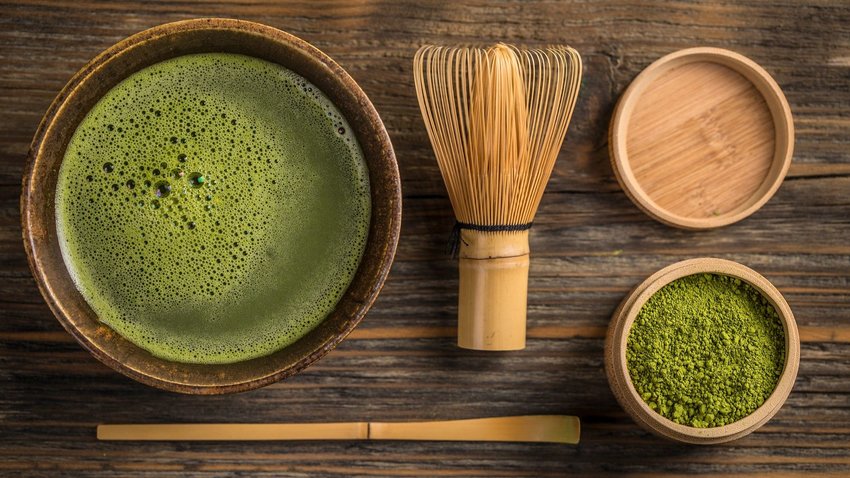
Having the right tools helps you achieve that signature frothy foam that tops each cup.
Chasen
This bamboo whisk helps dissolve the matcha powder in warm water by incorporating air into the powder throughout the process. This helps you achieve a smooth consistency. I like this bamboo whisk for its durability, and because it comes with the chashaku, it makes a convenient starter set.
Chashaku
This long handled bamboo scoop is used to measure matcha powder, and to transfer it from the packaging to the tea bowl.
Fine Mesh Strainer
This helps to create that silky smooth texture by breaking up the clumps that sometimes form in your matcha powder. This fine mesh strainer is easy to grip, and I find that it’s the perfect size for the amount of matcha powder used to make each cup.
Chawan
A chawan is a ceramic bowl used to whisk matcha in and drink from. This deep bowl makes it easier to whisk the matcha powder into the water without spilling any of the contents. But if you’re looking for something more decorative, check out this beautifully painted rabbit one.
Electric Kettle
An electric kettle is required to measure the exact temperature of the water for brewing that perfect cup. This electric kettle by COSORI comes with five temperature settings, which I enjoy experimenting with to achieve that fine balance of sweetness and bitterness in my matcha tea. Its elongated pour spout also allows for precision and prevents spilling.
How to Make Traditional Matcha Tea
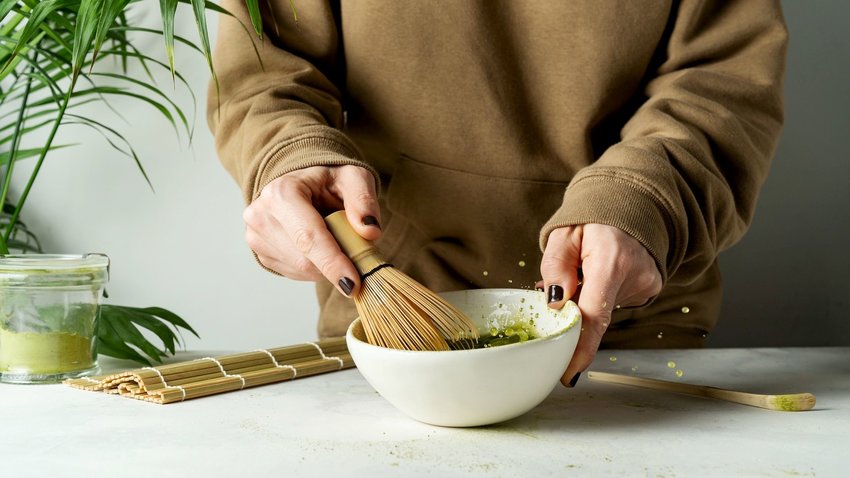
Heat It Up
Unlike brewing regular tea, dissolving matcha powder in boiling water will scorch it, imparting an unpleasant bitter flavor. Instead, heat water in the kettle to somewhere between the 175°F and 195°F range. Experiment with the temperature in this range, and you’ll discover that water at the lower end of the spectrum will yield a sweeter tea, whereas water at the higher end will bring out the grasiness. To prevent chemicals in naturally hard water from imparting flavor to the delicate taste of matcha, go for spring or filtered water.
Scoop the Matcha
Using the chasaku, measure three scoops, or two grams of powder for every two ounces of water. However, feel free to play with the powder to water ratio to discover your desired potency.
Sift the Matcha
Before you drop the powder into the bowl, put your matcha through a fine mesh strainer to remove any clumps that might have formed in the powder. This will help the powder fully dissolve in the hot water and make sure you get that smooth, silky texture.
Whisk It All Together
Briefly dip the bamboo whisk in warm water to soften its delicate strings, then briskly whisk in an M or W shaped motion to incorporate the powder into the warm water until it fully dissolves. It usually takes no less than 15 seconds to achieve an even layer of foam.


